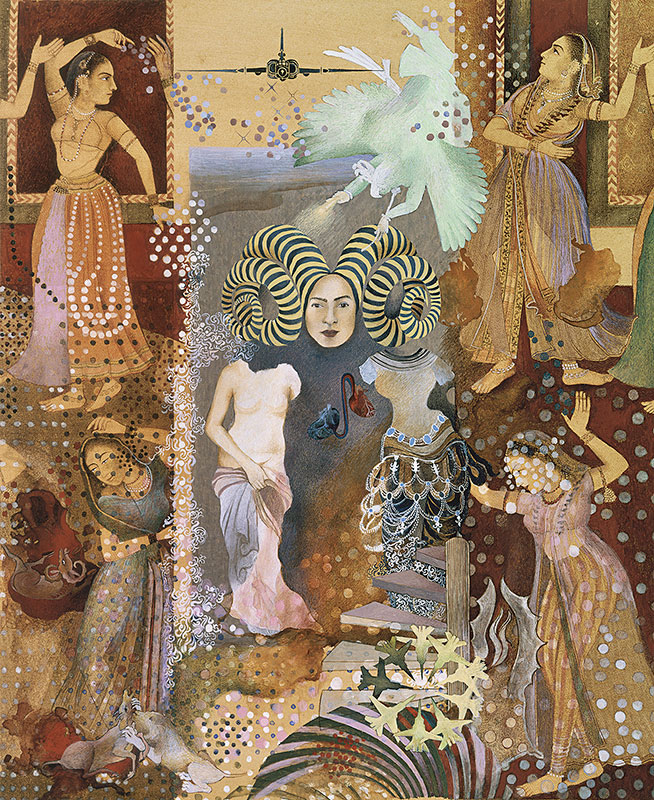
The array of archetypes portrayed here reveals the range of sources that Sikander looked to as she celebrated female sensuality and desire. Her central self-portrait with ram’s horns conjoins fragmented statues inspired by the Roman goddess Venus and a South and Southeast Asian celestial dancer. Above, two images of destruction threaten this scene of unrestrained pleasure: a fighter jet, which Sikander added in the aftermath of 9/11, and a winged, hybrid creature that seems to shoot fire from its hands.
Shahzia Sikander (born 1969)
Pleasure Pillars, 2001
Watercolor on tea-stained wasli paper
Collection of Amita and Purnendu Chatterjee
© Shahzia Sikander. Courtesy: the artist, Sean Kelly, New York and Pilar Corrias, London.
Shazia Sikandar: In this painting, there are multiple female references. So all these female avatars in my art have thoughts, emotions, feelings, and the iconographies are coming out of this vast intellectual virtuosic manuscript traditions of Central, South, and East Asia. There are a lot of syncretic layered visual histories that are usually referenced, and these women also embody a multidimensionality. And at times they may be androgynous, but they're complex and confident and proactive and also playful. That's what I wanted to celebrate in this particular work is the female sensuality, the desire as well as the courage. And it was a way of speaking back to the very fetishized female representations, especially at that time in 2001. I was countering the very paternalistic belief about saving of Muslim women from Islamic extremism, which was often used to justify the US imperial war and invasion of Afghanistan in 2001. So, this painting speaks back to some of that representation. You can see that the archetypes are gathered from multiple religious and cultural sources. There's this fighter jet under which even there's a portrait, which could be my self-portrait also.
